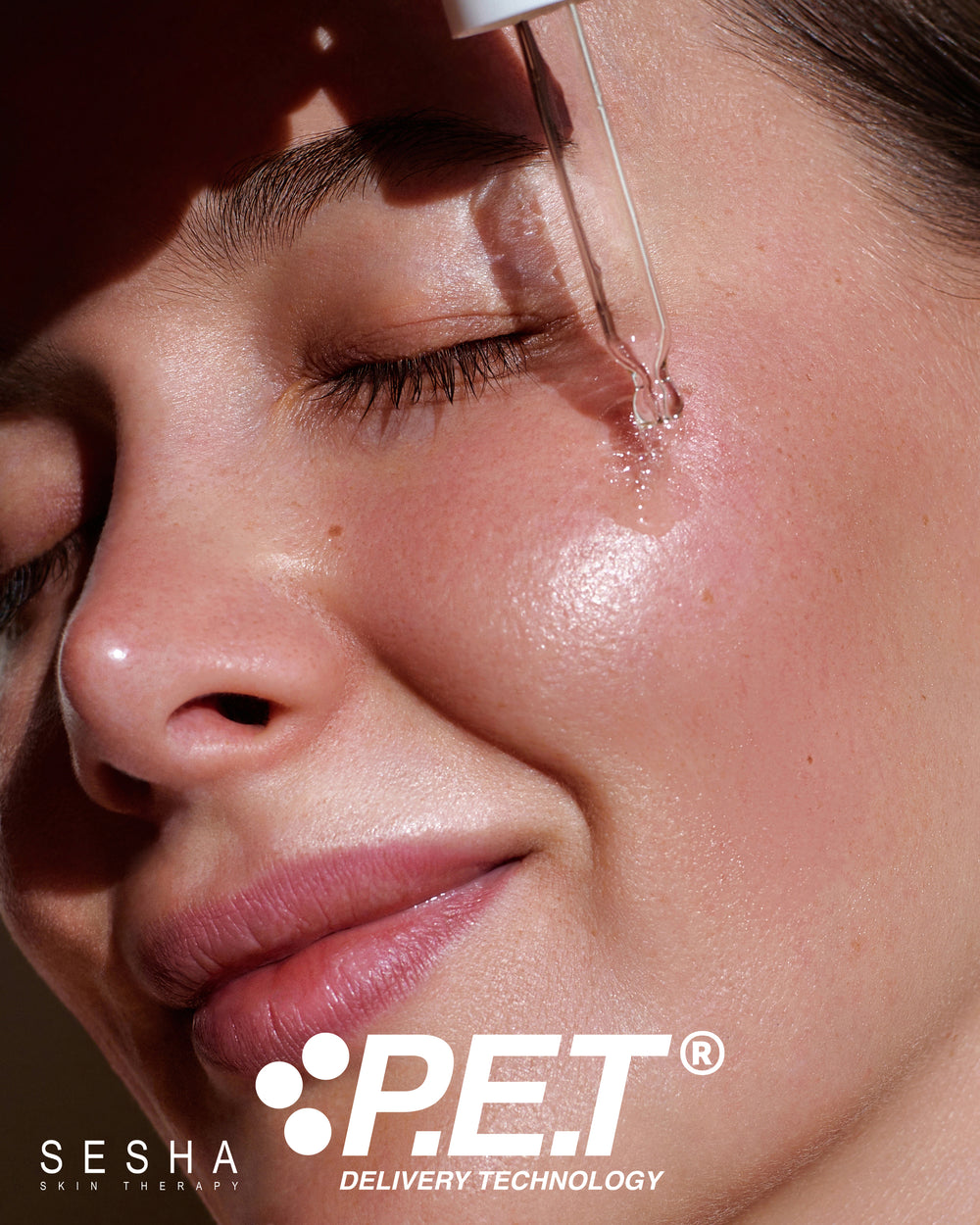Anatomy Of The Skin
SKIN STRUCTURE AND FUNCTION
The skin, being the body’s largest organ, forms a continuous, multi-layered, water-resistant barrier over the entire body. Although skin types and conditions vary genetically and by ethnicity, all human skin has the same basic structure and function.
The skin and its accessory organs, such as oil and sweat glands, sensory receptors, hair, and nails make up the integementary system of the body. A single inch of skin contains millions of cells, multiple feet of blood vessels, hundreds of sweat and oil glands, and thousands of nerve endings.

Junginger, H.E. Visualization of Drug Transport Across Human Skin and the Influence of Penetration Enhancers.
Healthy skin is slightly acidic with a pH of approximately 5.5. It is thinnest on the eyelids and thickest on the palms of the hands and the soles of the feet. The skin is comprised of two distinct sections, the epidermis, which is the outermost section of the skin, and the dermis, which is the innermost, deeper section of the skin.
The epidermis consists of epithelial cells contained within five thin layers of skin, each with unique functions. The layers are, starting from the surface of the skin, the stratum corneum, the stratum lucidum, the stratum granulosum, the stratum spinosum, and the stratum germinativum (often called the basal layer), which connects to the dermis. Surrounding the cells of the epidermis is lipids, or intercellular cement, that provides hydration and prevent water loss.
The Epidermis:
- The stratum corneum is composed of a few microns of dead and dying cells called keratinocytes. These cells are continually being shed and replaced by new cells from below.
- The stratum lucidum is a clear layer of small cells that allows light to pass through it.
- The stratum granulosum, or granular layer, is composed mainly of keratin or protein fiber cells and intercellular lipids.
- The stratum spinosum, or spiny layer, is a multi-layered arrangement of cuboidal cells joined by desmosomes, protein molecules specialized for cell-to-cell adhesion, that give them their spiny appearance.
- The stratum germinativum, or basal layer, lies at the base of the epidermis immediately above the dermis. It consists of a single layer of tall, simple columnar keratinocytes and melanocytes. These cells undergo rapid cell division to replenish the regular loss of skin being shed at the surface of the skin. Melanocytes produce the skin’s coloring agent, melanin. This is the layer where, because of PET™, the ingredients can penetrate through all the the aforementioned layers to the basal layer to nourish the skin.
BARRIER FUNCTION
The protective nature or barrier function of the skin is the principal function on which we want to focus. Without a tough, semi-impermeable skin, the body would rapidly fall prey to invasion, exposure, and dehydration in the hostile environment in which we live. The skin acts as a barrier and protects against external elements and harmful substances such as microorganisms, chemicals, and ultraviolet rays. The barrier function is accomplished remarkably by the outermost few microns of skin, the stratum corneum (SC). This epidermal layer consists of 15-20 layers of densely packed, flattened, metabolically inactive cells, followed by several layers of closely packed cells forming a tight cellular continuum approximately one hundredth of a millimeter thick. Its staggered arrangement renders the outer membrane 1000-times less permeable to water than most other bio-membranes. As a result, there is little intercellular space for diffusion. Some diffusion through the SC does take place but this process is slow, random, and depends on the moisture reserve of the skin.
Because the SC is designed to keep substances away from the lower levels of the skin, large molecular structures such as peptides and vitamins cannot penetrate easily. This is why cosmeceutical delivery systems are vital for the administration of a broad scope of active ingredients.




